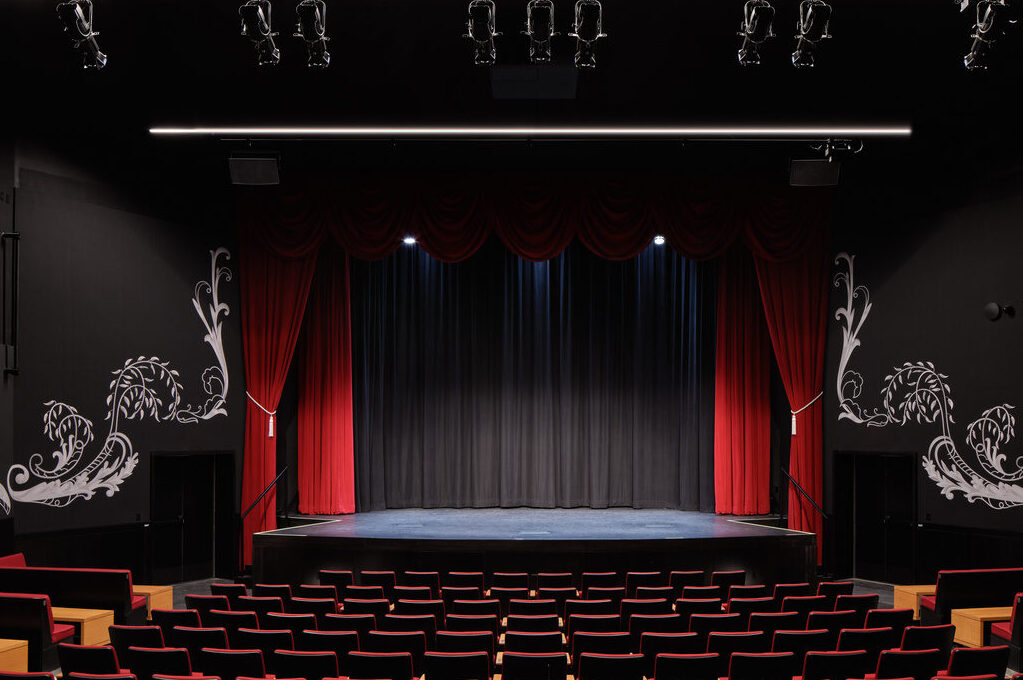
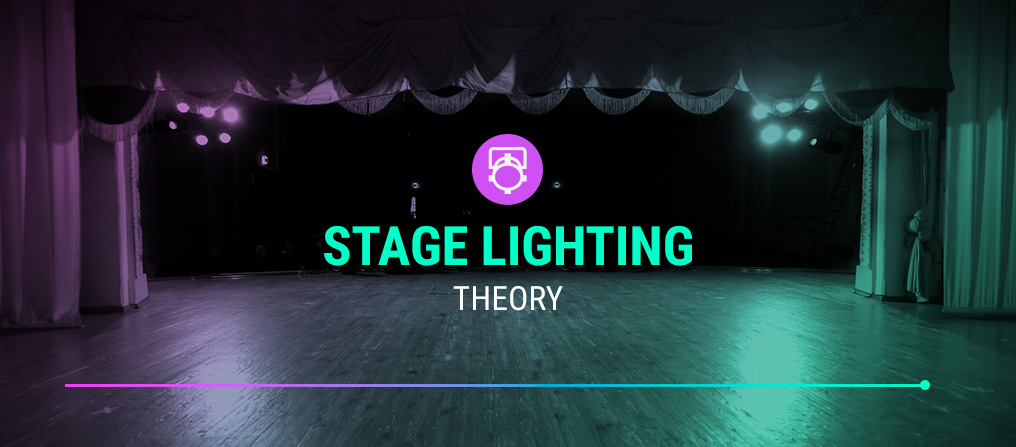
Stage lighting is a key component to creating intoxicating performances. The lights illuminate the stage, highlight key focal points, set the scene, and more. From giving visual direction to grabbing the audience’s attention to shaping and enhancing the environment, lighting adds a unique layer to every show.
Stage performances are exceptional due in part to the lighting that makes them even more enchanting. Learn how lighting affects mood in theatre performances and more with this helpful guide.
At Illuminated Integration, we understand the importance of good stage lighting design. Stage lighting has multiple benefits for every performance. Lighting makes a positive impact on the stage and provides an exceptional experience for your audience in several ways:
There are different ways to produce various visual effects when it comes to lighting up the stage. Using the proper lighting setup will help create highlights and shadows that will help captivate the viewers. Here are three basic lighting theories for stages and how they can help deliver exceptional ambiance for any performance.
Straight-on stage lighting works to mimic how the sun highlights objects from a straight-on point of view. It’s ideal for working with only one direction of viewing. This type of lighting requires lights to touch the focal point with 360-degree coverage, which requires strategic positioning for three fixtures.
One fixture should be at a 45-degree angle above the focal point and 45-degrees to one side. This fixture will act as the key light, the primary light source for this design. The other two fixtures act as fill lights. One should be at the same 45-degree overhead angle as the key light, on the opposite side of the focal point at a mirrored 45-degree angle. The final light fixture is positioned immediately above or 45-degree behind the object.
While staying close to the 45-degree angles will create a more natural lighting effect, you can change the measurements to change the effects. For instance, sharp angles above or below the object will create extremely exaggerated shadows on someone’s face — ideal if you are trying to achieve an unnatural lighting effect.
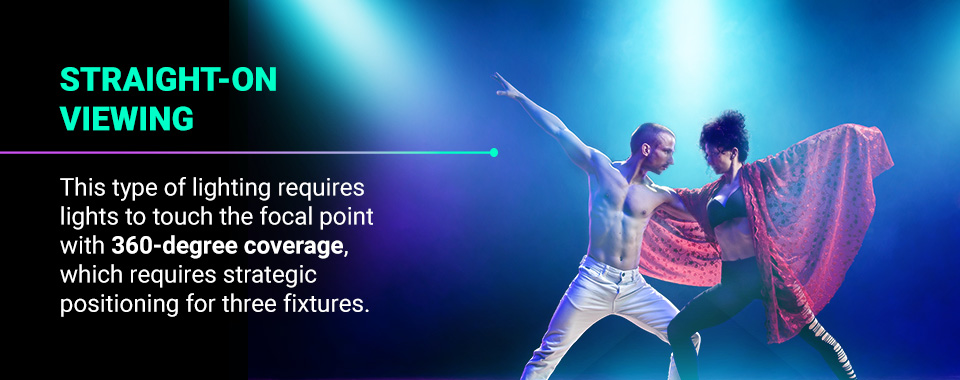
Stages that have more than one direction for viewing require multiple view lighting. The general setup for multiple view lighting remains relatively the same as straight-on viewing, though it requires you to add more fixtures.
Consider, for example, a stage open to the audience on three sides. You need three or four front lights for viewers from each direction to experience the same effects. In a three-fixture setup, a frontal fill light joins two key lights to the left and right sides. The four-light design requires a key light and a fill light on either side of the stage. These setups keep the relationship between key and fill lights the same for either side of the audience.
You can properly execute light effects while still utilizing basic stage lighting theory when lighting for other viewing positions. To use this technique, you can add fill lights in conjunction with the key lights to help provide the right amount of lighting.
This type of lighting helps enhance body modeling and is popular for performances like ballet, where the lighting can help enhance the dancers’ movements.
Color helps to bring an entire performance together. It assists with establishing the setting from start to finish and enhances the moods that the performance needs to convey to the audience.
We live in a world of colors that symbolize and even impact our moods, intentions and focus. While we might overlook how colors affect us on a daily basis, they come to the forefront when they’re used as part of a theatrical performance.
Find out how to use stage lighting color theory to contribute to stories successfully being played out on stage.
RBG lighting is done by fading colored LEDs or lights up and down to mix them together until they achieve a particular final color.
Lighting’s primary colors, used to produce a wide range of stage light color combinations, are red, blue, and green. The majority of LED and RBG lights are comprised of lights in these colors to help produce different combinations:
You can expand these color options even further by adding amber or white light. When you direct the different lights onto a backdrop, the combination creates the ideal color.
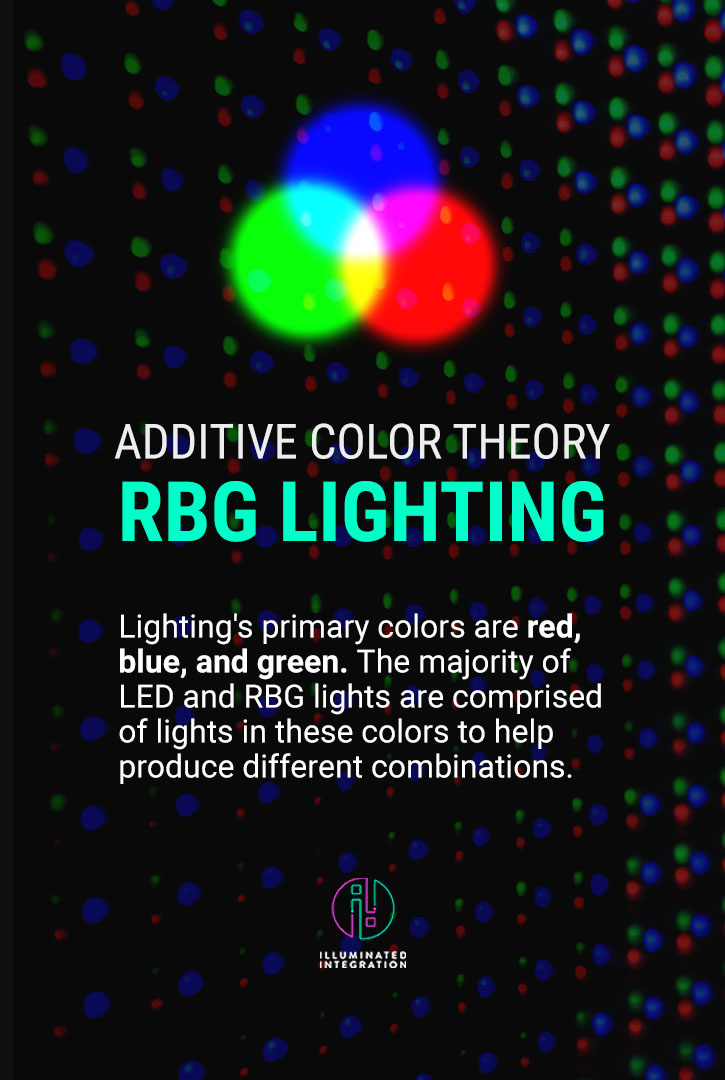
It’s common for moving lights and other color mixing engines to have a lamp that produces white light. These lamps generally have a set of three color filters — cyan, magenta and yellow — attached to them. When the light shines through one of the filters, they block light in their complementary color while letting the other light through. For example, a cyan filter would block red light while allowing green and blue light through.
Using these secondary colors instead of the primary red, blue and green helps produce deeper, richer colors for CMY mixing.
Lighting colors function based on two different factors:
Different light sources carry different color temperatures, a factor of white light. The lower the light source’s color temperature, the more yellow the white light appears to be. If the color temperature is higher, the white light will appear bluer.
Consider the difference between fluorescent light bulbs and traditional incandescent light bulbs. Fluorescent lights have a much higher color temperature, giving them a brighter, bluer effect, while incandescent light bulbs have a yellower, warmer feeling.
Colored gels are the most common subtractive lighting method for non-LED lights and create an interesting and natural effect.
You can provide the colors you need for stage lighting by placing a ‘gel’ — a colored plastic filter — over a fixture to tint the light. However, gels provide muddier colors than CMY lighting, and it can be challenging to get the color you want.
One of the key things to remember is that while CMY color wheels subtract from white light, RGB color wheels add color. In some instances, you may prefer one stage lighting method over another, depending on the exact outcome you are looking for.
For example, if you want to mix a deep red, you’ll need to know how bright you want it to be. Creating a deep red with RGB is as simple as bringing up the red color. However, creating deep red with CMY by subtracting magenta and having yellow at full exposure will create a deep color but dimmer light.
As previously discussed, basic lighting theory requires the proper use and placement of lighting equipment. When it comes to stage light application, it’s important to be able to evaluate what kinds of equipment you’ll need and where to place each fixture to perfect the overall look. This section discusses more factors to consider when preparing the application of stage lighting.
Lighting an indoor stage will require multiple lighting fixtures. Basic theatrical lighting fixtures are generally designed to emit light in a 12 to 14-foot radius. When you need to light a large area, such as an entire stage, it’s easiest to break down the total area into multiple focus sectors. For instance, 8-foot to 10-foot squares require the overlapping of 12 to 14-foot beams to overlap, so a 16-foot wide by 16-foot deep stage will need a minimum of four focus areas to illuminate the entire area.
This basic setup will vary from stage to stage depending on the size and the points of viewing. If the stage is larger with a three-quarter viewing, you will need more fixtures than you would with a straight-on viewing. A smaller stage may require fewer light fixtures due to fewer focal points.
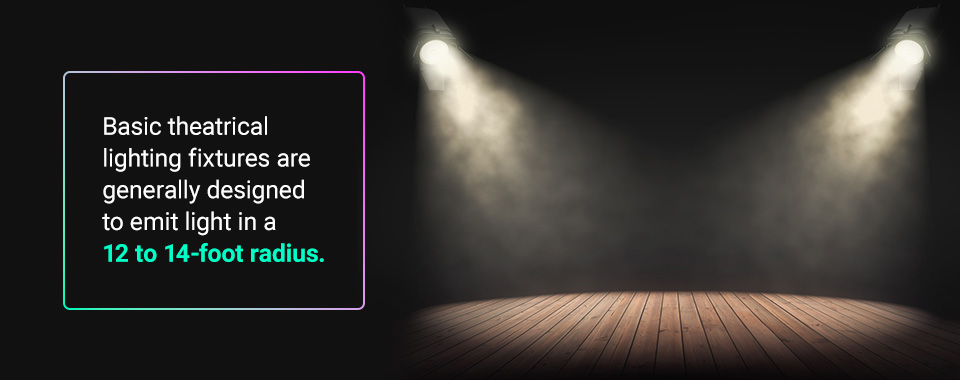
Because there are various fixtures you can use, it’s important to carefully consider which ones will best suit your lighting needs for the space and performance:
There are many types of noise that can come from lighting fixtures thanks to fans, radiators and movement. Whatever type of lighting fixtures you use, a certain amount of noise interference is inevitable. However, it’s essential to try to reduce that noise as much as possible so that it doesn’t distract from the performance.
To help reduce noise, try to keep the lighting fixtures well away from the walls and ceiling. If possible, keep their environment relatively cool while they’re in use and make sure that the ventilation holes are clear and unobstructed.
Some newer models of lighting fixtures come with a quiet mode that can be used in theatrical settings to help reduce noises. While these fixtures can still make noise, they’re likely to be quieter than other models.
Lighting plays such an important part of our world both inside and out. Trust in the professionals to help with whatever kind of lighting you need.
At Illuminated Integration, we’re dedicated to providing superior lighting designs. Our industry veterans will help you through the entire design process. When you work with Illuminated Integration, the experience includes:
When you need stage lighting for your venue, Illuminated Integration has the knowledge and experience you seek for a job well done. From start to finish, we are there for you every step of the way with unbeatable customer service. Contact us today for more information to see how we can help make your stage lighting dreams a reality.
